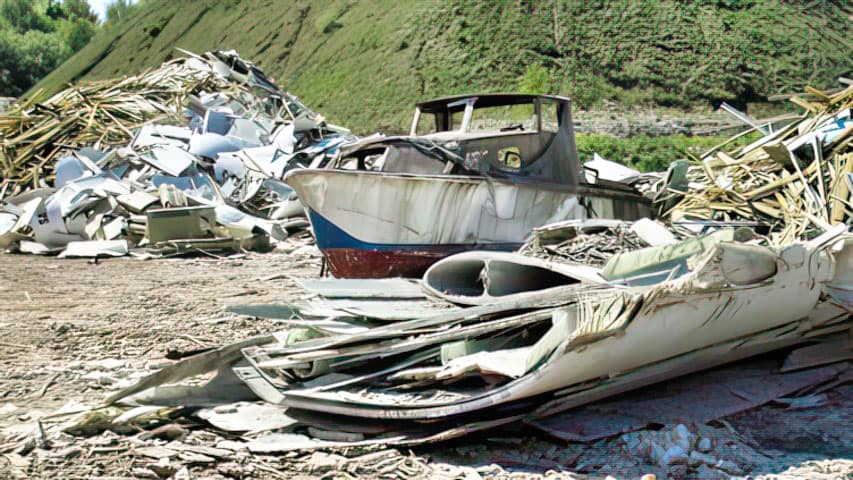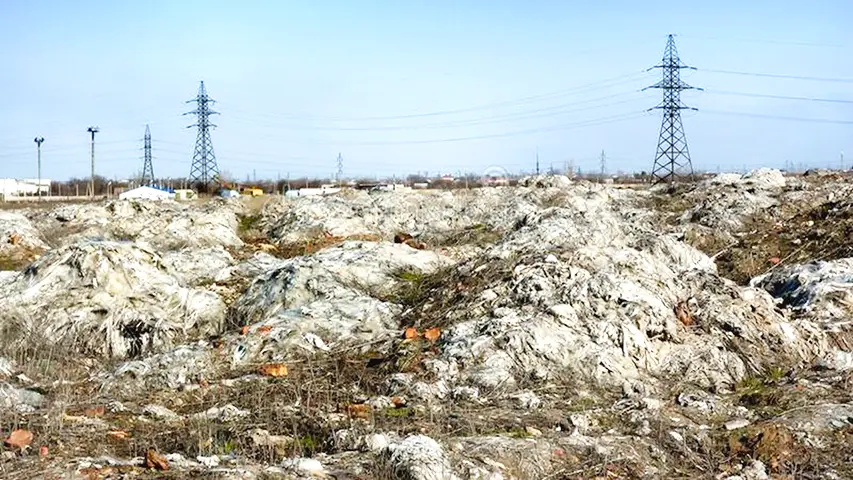
Jeroen Wats, Founder and Chief Innovation Officer at ExoTechnologies wrote this inspiring article on LinkedIn. Published here with permission.
The Future of Glass Fibres
March 27, 2023
Spreading news, creating awareness, awareness which leads to concern and concern which leads to action. We are on a pathway of changes. That is positive right? But how far are we…?
Recycling composites is a topic which grows attention and it is absolutely great news that some big yacht builders and wind turbine manufacturers are jumping on the recyclability aspect for their products in order to be “guilt free”.
So… are these developments “ground breaking”, “greenwashing”, or maybe something in the middle?
Recycling glass fibres is without any doubt a step in the right direction. Re-using the fibres for another application will slow the growing landfill issues down, yet… it doesn’t solve it.
Looking back at a recent interview I had with Rhea Rouw from Yachting International Radio, there was a topic coming up which made me think very clear.
Rhea (always very straight forward and unfiltered) explained how her father used paper bags which he repurposed over and again before it was disposed of.
That paper bag turned into a plastic bag which was the breakthrough of these times.
Once we realised the horrendous effects of plastic on the planet, we changed our ways and are moving back to paper bags.
Was the plastic bag bad? Yes sure, but what did we knew then about the effect of plastic in the future to come?
These are hard lessons and is costing society a staggering amount of money to clean up what we have polluted. Even with all the recyclable aspects of plastic today.
And that made me think. Taking the paper bag as an example. Glass fibre production was a break through. A new way of cost effective alternatives over conventional production methods
At that time: perfect and as previously stated, not knowing then what the environmental side effects of GRP would be in in the future to come.

And here we are: Just in the EU over 250.000.000 kg of GRP end in landfill… every year! And apart from the recent re-using aspects there is more to come to the side effects of glass fibres. Taking negative effects on subjects like:
- Climate Change
- Human Toxicity
- Photochemical oxidant
- Terrestrial acidification
- Fresh water eutrophication
- Marine eutrophication
- Terrestrial ecotoxicity
- Fresh water ecotoxicity
- Water depletion
- Metal depletion
With glass fibre particles recently found even in our food chain, boric acid which might find its way in drinking water, we have to stop launching “half baked” solutions. Not keep the magnifying glass on a new way to recycle but the entire scope of the sustainable aspects of a product.
The numbers are staggering. In 2020 alone, it’s estimated that between 7.35 to 9.8 million metric tonnes of silica sand were required for the 4.9 million metric tonnes of GFRP composites that were produced globally. And that’s just the start.
To produce just one metric tonne of GFRP composites, it takes an estimated 0.35 to 0.5 metric tonnes of resins and additives, as well as 2,000 to 3,000 kWh of energy and 200 to 300 gigajoules of thermal energy. All told, the production of GFRP composites consumes massive amounts of raw materials and energy.
The environmental impact of this production is significant. The estimated 10.8 to 12.2 million metric tonnes of CO2 emissions from the production of glass fibre and GFRP composites in 2020 alone is equivalent to the annual emissions of several small countries. And let’s not forget the mind blowing water consumption figures – approx. 490 million cubic metres of water were consumed in the production process in 2020.
And with all we know today we have to understand that glass fibres is the asbestos of our times. With superior, cleaner, affordable, better and even circular innovations being available…: Today.
Link to the original story “The Future of Glass Fibres” by Jeroen Wats.



